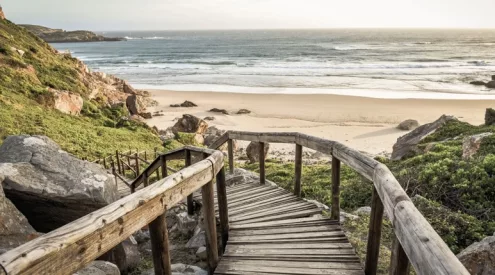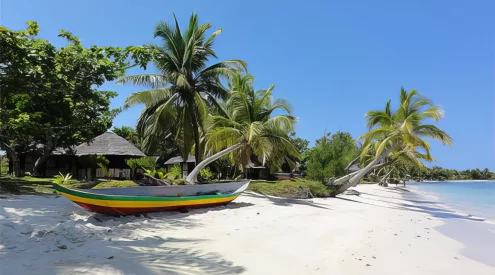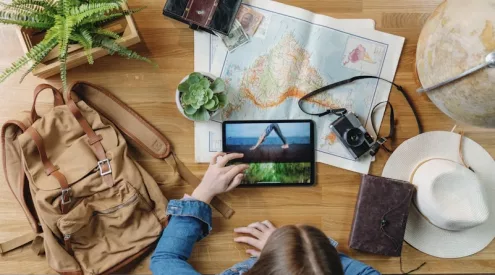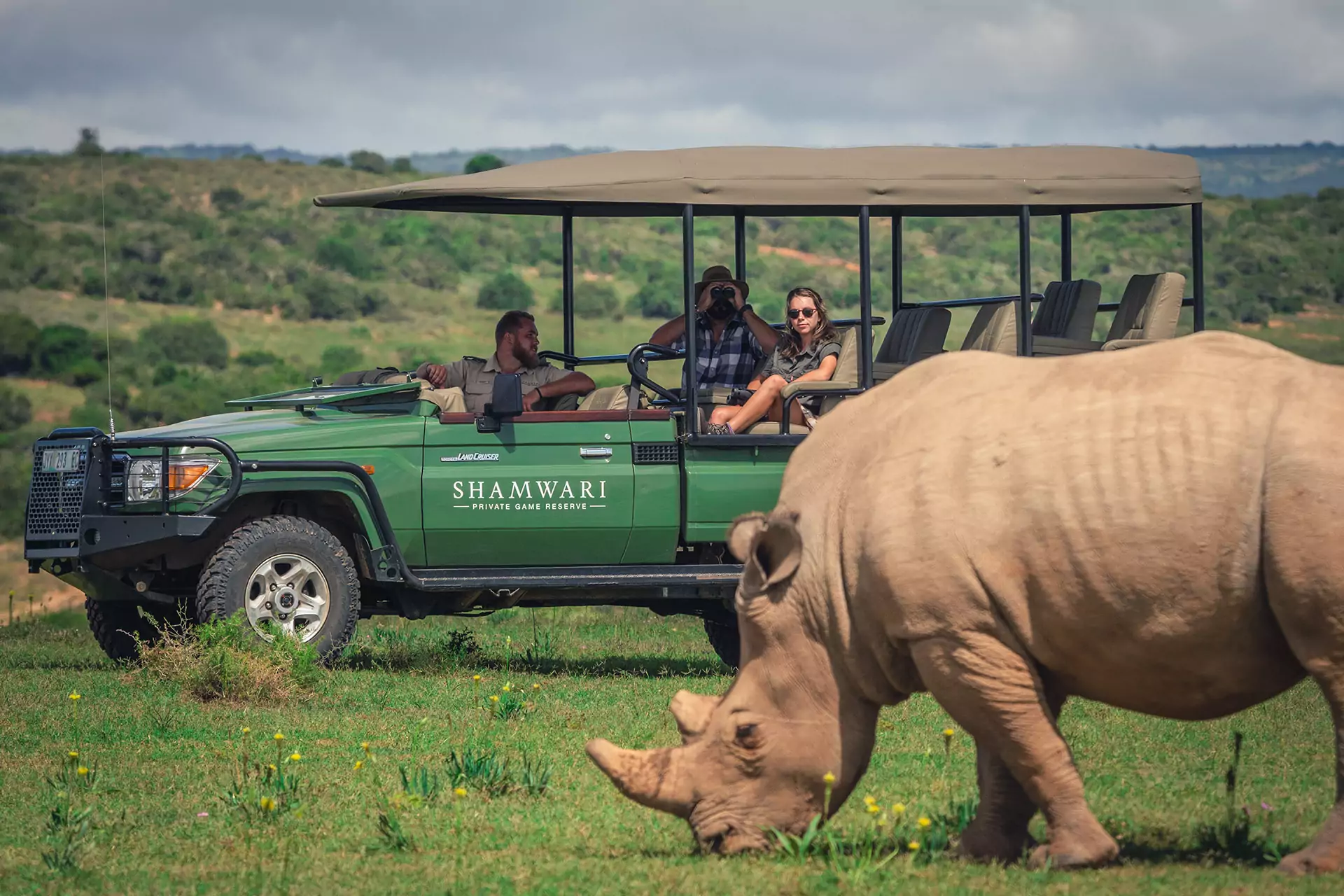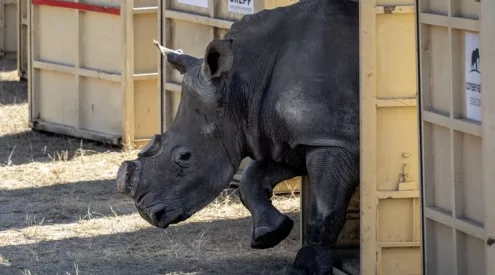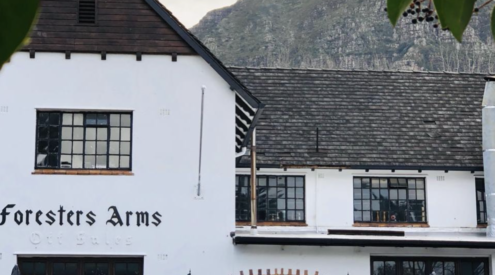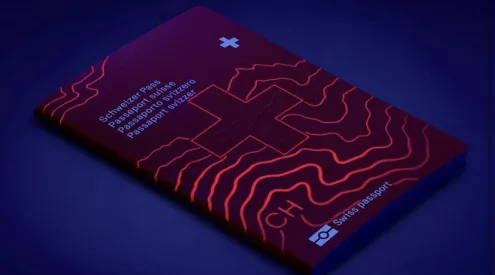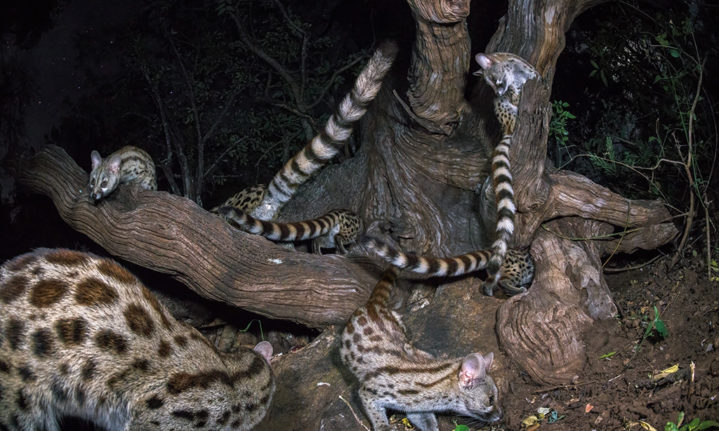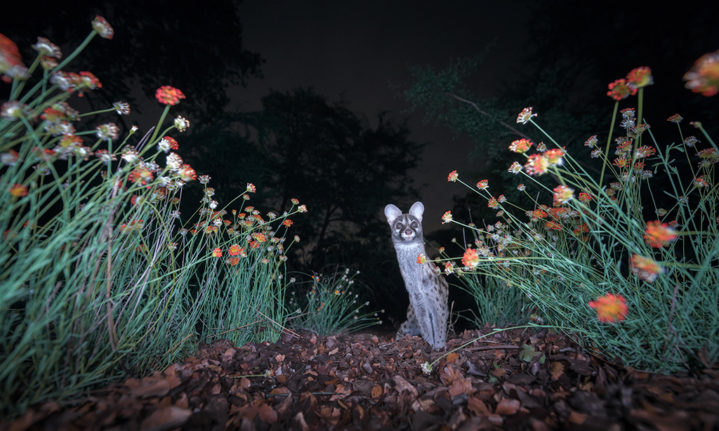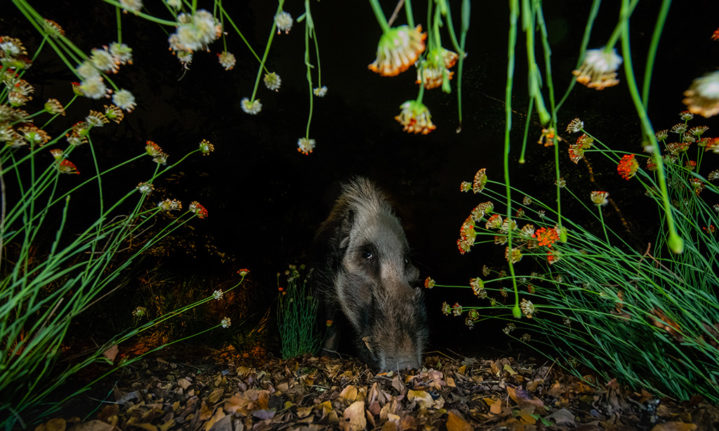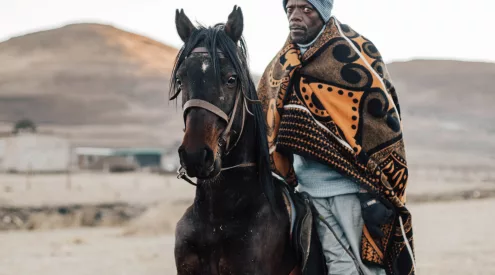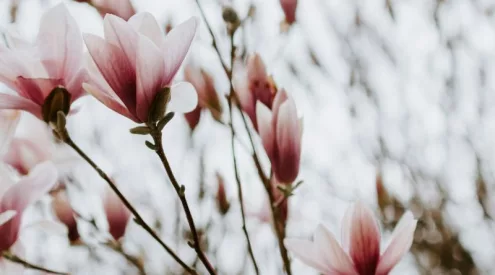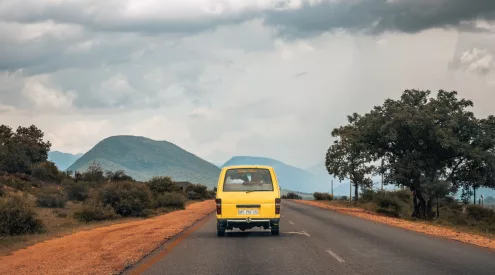The art of photography is sometimes referred to as ‘painting with light’. Imagine then, painting in the dark. Hannes Lochner took up this challenge when he decided to photograph nocturnal wildlife. For the first time in print, he presents his remarkable new project.
Words & Photography: Hannes Lochner

A composite image of spotted genets gives a sense of their frenetic nocturnal activity at their den of the base of a tree.
Personally, 2020 will be remembered for many reasons. My wife Noa and I, usually out in the field working on photographic and filming projects, were confined to our home – a huge adaptation for us – while it was also a very stressful period financially. Not just doom and gloom, it was an opportunity to rethink our professional programme and do all the things that we have neglected during the past few years.
Of course, animal life continued as usual and we were finally able to get out into the field when restrictions were lifted, in a small private game Reserve near Blyde River. We had plenty of work to do testing new gear from sponsors and rechecking all our other equipment to ensure all batteries and lenses were in tip-top shape.

Triggering a sensor with its movement, a spotted genet is caught in the glow of an indirect camera flash – just enough illumination without scaring the creature.
Ready for action, we could once again spend time with the animals we adore. It was wonderful to start the game drive vehicle for the first time in months. Everything was just so much better. Sightings! Smells! Sounds!
Game was everywhere, and I must admit, even the animals looked more relaxed after a break from us humans.

Cape porcupines are the largest rodents in Africa, growing up to a metre long and weighing as much as 20kg.
For the next few weeks I wanted to focus on subjects that have been eluding me during the last decade. The civet was my main prize, followed by a genet and a porcupine. Whatever else I could find at night would be a bonus. I discovered a little ravine with a lot of tracks leading towards a waterhole, so we realised that many animals frequented the area.
I usually set up a camera with different light sources as well as a sensor, and camouflage it, which is the best approach to capture very skittish subjects. Thus, when animals move past the sensor, it sends a signal to the camera, which in turn sends more signals to the different light sources followed by taking the photograph.

The African civet is seldom active in daylight and is solitary most of the year except for mating season.
Setting up this system might sound quick and easy but this is where things can get extremely complicated. With every subject, your light source may be at a different angle, or strength, while the projected path the animal may follow has to correlate with your focus distance. All these elements are co-ordinated by cables and triggers. If one element does not function properly, the final images will be a failure. Setting up your camera and lighting spots is aided by a thorough understanding of animal behaviour ensured that everything was set up properly. The next day I was overjoyed to have photographed a family of three, happily playing in front of the den and at the base of the tree.
I’m normally not fond of composites or double exposures but I thought it might be interesting to capture an image of the family in different spots on and around the tree. I then prepared a composite of a few images balancing the composition quite well. I also went on to try putting different species within the same frame.
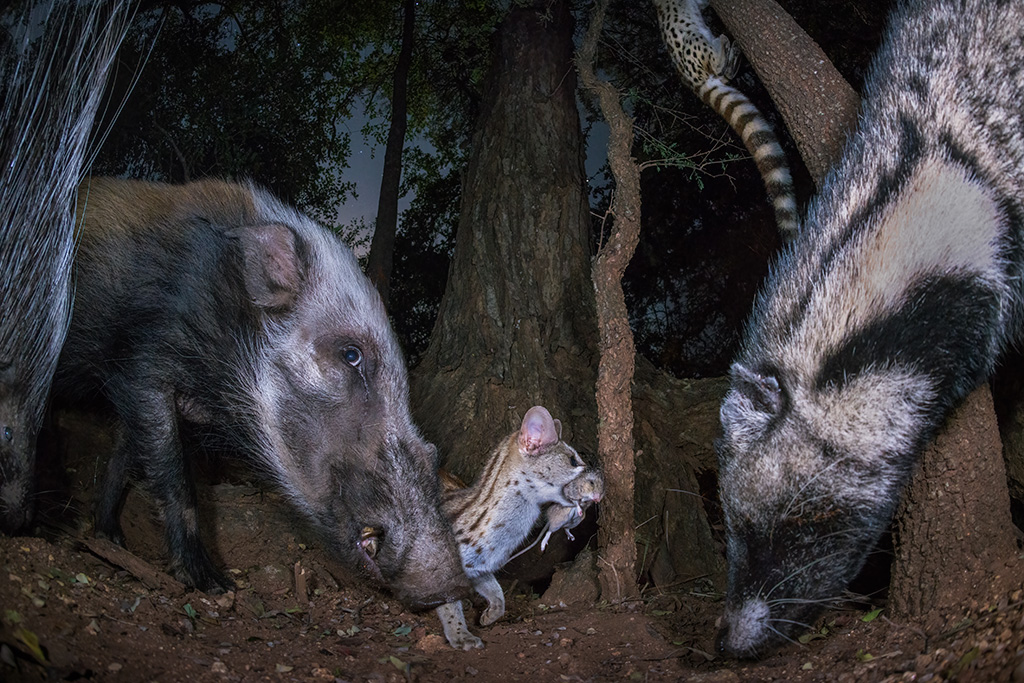
A multiple exposure gives a sense of the wildlife activity in one single location.
Happy with my final product, I moved on to the third item on my wish-list: the porcupine. Although I have collected a few images of these spiky critters over the years, I was never really happy with the final products. I needed to get closer, and wider. After another few weeks, I finally succeeded with an image of a porcupine and her porcupette.
I was happy with the results and delighted that could finally tick off the list of creatures which had eluded me for so long. I was also happy with the new gear and the ultimate bonus: a bushpig, nicely framed by flowers in a leafy ravine. Mission accomplished!
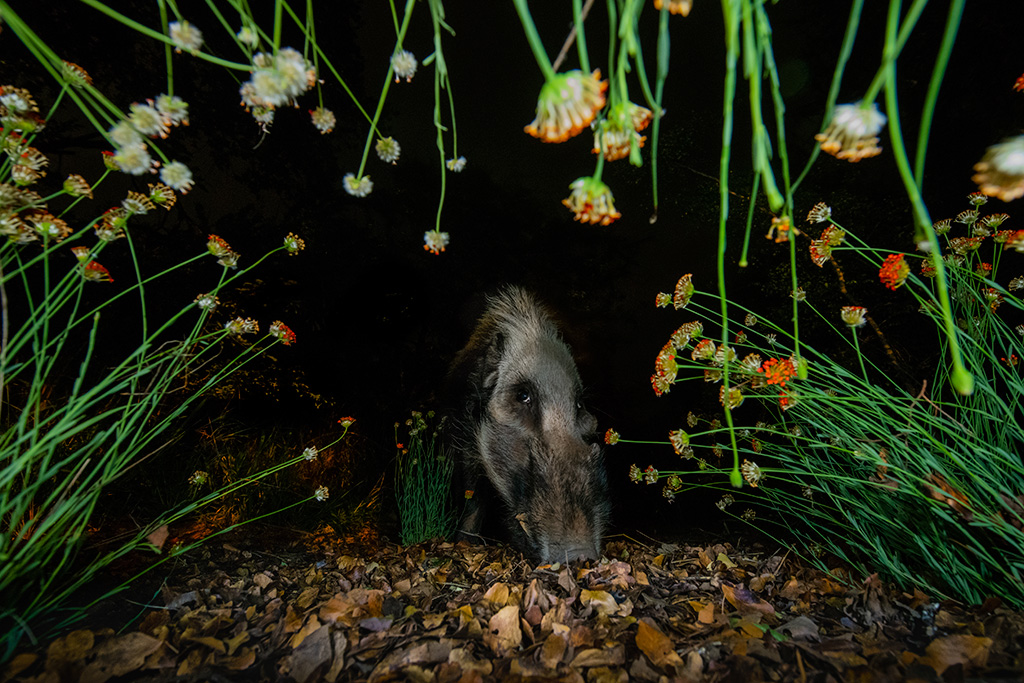
A bonus on a nocturnal quest like this is capturing images of bush pigs which, unlike their ubiquitous warthog cousins, are hardly ever active during the day. Both species have the same fighting tools: blunt tusks on the top jaw and smaller razor-sharp tusks on the lower jaw. The tusks of a bush pig are shorter and less visible than those on warthog.
Hannes used @sonyalphasa, @cartoni.camerasupports and @lacie_tech systems to capture this series.

